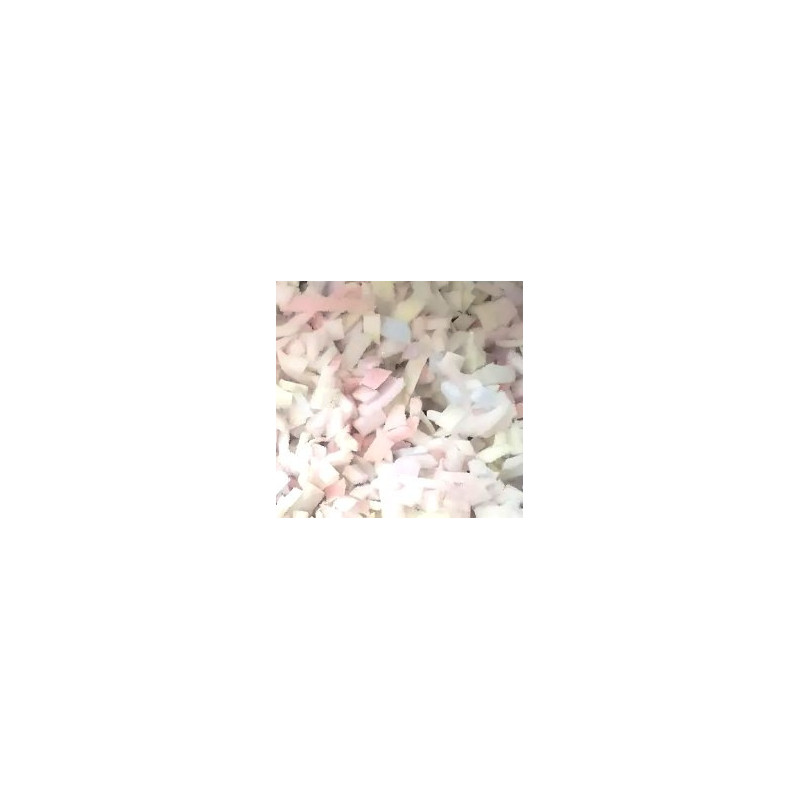



Improve Orchid Substrate Moisture
Specially selected for its exceptional water retention properties, this moss ensures a constant and optimal level of humidity around your orchid's roots. Say goodbye to dry substrate issues and welcome healthier and happier orchids. Elevate your orchid care today with our moisture-retaining moss!
Potting Substrate for Orchids
Shredded moss is a commonly used material to improve the humidity of orchid substrates. It offers several significant advantages that make it a popular choice among gardeners and orchid enthusiasts. Here are the main benefits of using shredded moss for orchid substrate humidity:
Water retention: Shredded moss has an excellent ability to retain water. By incorporating it into the substrate, it helps maintain a constant level of humidity around the orchid roots. This is particularly beneficial for orchid species naturally originating from humid forest environments, where they are accustomed to a certain level of moisture in their surroundings.
Enhanced drainage: While shredded moss can retain water, it also provides good air permeability, allowing for adequate drainage. Proper drainage is essential to prevent root rot, a common issue in orchids when the substrate remains excessively wet for extended periods.
Reduction of humidity fluctuations: By stabilizing the substrate's moisture, shredded moss helps reduce abrupt humidity fluctuations, which can be detrimental to orchids. These fluctuations can stress the plants and lead to health problems.
Promotion of root aeration: The structure of shredded moss optimizes the aeration of orchid roots. Good aeration supports the development of healthy roots and enables better nutrient absorption.
Substitute for bark: In some regions, bark, which is commonly used in orchid substrate mixes, may be difficult to find or expensive. Shredded moss provides a viable alternative to bark and can be used alone or in combination with other substrate materials.
Facilitation of nutrient retention: Shredded moss can trap nutrients present in the substrate, providing orchids with a continuous and balanced source of nutrients.
It is essential to note that not all types of orchids have the same substrate requirements. Some prefer more aerated mixes, while others thrive in more humid blends. Therefore, it is advisable to research the specific requirements of each orchid species to ensure providing them with the best possible growing environment. Additionally, regular substrate replacement is recommended to avoid the accumulation of mineral salts and organic debris.
My recommendation: I suggest using 1 liter of shredded moss for every 5 liters of substrate.
A quality substrate is essential for the well-being and prosperity of orchids.
By providing an optimal growth medium, a good substrate allows roots to breathe, effectively drains excess water, and maintains a balance between moisture and aeration.
Orchids have specific substrate requirements due to their epiphytic growth habits. An appropriate substrate promotes root health, encourages flowering, and reduces the risk of rot.
Carefully selecting the right substrate contributes to creating an ideal environment for your orchids, ensuring their sustainable flourishing.
Repotting Tips:
Choose the Right Time: Repot orchids when they show signs of outgrowing their current pot or when the substrate has degraded.
Select the Proper Substrate: Use a well-draining orchid mix containing materials like bark, sphagnum moss, and perlite. Avoid using regular potting soil.
Inspect the Roots: Gently remove the orchid from its current pot and examine the roots. Trim damaged or rotting roots with sterilized tools.
Choose a Suitable Pot: Select a pot that offers sufficient space for the orchid's roots to grow. Ensure it has drainage holes to prevent waterlogging.
Position the Orchid: Place the orchid in the new pot, spreading the roots evenly. The base of the stem should be slightly above the substrate level.
Fill and Pack: Fill the pot with the chosen substrate, gently pressing it to settle around the roots. Water lightly to help further settle the substrate.
Allow Adaptation: After repotting, place the orchid in a shaded area for about a week to help it adapt to its new environment.
Remember, proper repotting with the right substrate enhances the overall health of your orchid and contributes to its successful growth and flowering.
Feel free to check out my videos and tutorials on my YOUTUBEchannel!